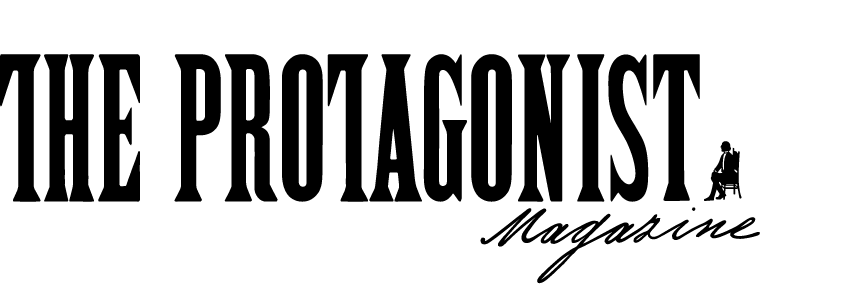Bark, Bat Bones and Bodily Fluids
Ilma Uglobari: Umberi – Legendary Snake Name. (Detail). Photograph: Birgitta Huse
“Pigments are made variously from pounded and chewed leaves, roots, volcanic ash and fruit pulp.”
“The exhibition pieces’ origin is to be found in the barkcloth tradition of the Ömie people in Papua New Guinea.”
“We might easily forget the important role that the artist’s body plays in the process of creation.”
Bark, Bat Bones and Bodily Fluids
Ilma Uglobari at the Rebecca Hossack Art Gallery
★★★★
WRITTEN BY DR BIRGITTA HUSE, 12.11.2022
Sustainability is a much-discussed subject, including when it comes to art. The material aspect of the works in the show “Eye of the Sun” calls for special attention. Ilma Uglobari, formerly known as Ilma Savari, presents works which are made of mulberry or fig tree bark in her first solo exhibition outside of Papua New Guinea at the Rebecca Hossack Art Gallery. The artist uses the skillfully hand-beaten barkcloth as a base for appliqué and painting.
We can admire two types of barkcloth art at the London Gallery until 30th November 2022: firstly, those works with broad black lines, and secondly, those works with detailed paintings in an appealing natural red, yellow, white and black. In both cases an uneven light brown barkcloth serves as an attractive “canvas” and sparks our desire to touch it, even more so as barkcloth is an unusual material for us to come across in London galleries. We can read on the gallery’s website that “[h]er restrained palette – of ivory whites, charcoal greys, cinnamon reds, and brilliant golds – derives from her immediate rainforest environment. Pigments are made variously from pounded and chewed leaves, roots, volcanic ash and fruit pulp.” Rebecca Hossack Art Gallery describes itself as being “committed to championing indigenous women artists from around the globe” – Uglobari’s exhibition is a testament to this promise.
Ilma Uglobari: Majanune, 2020 (Detail). Photograph: Birgitta Huse
Ilma Uglobari (Savari): Bojo e Sore, hand beaten barkcloth, appliqué, natural pigments, 200 x 70 cm, 2020 (left) and Majanune, hand beaten barkcloth, appliqué, natural pigments, 227 x 96 cm, 2020 (right). Photograph: Birgitta Huse
What I personally find most fascinating is the artists’ use of finest bat bone for sewing, and the fact that some of the natural pigments are gained by chewing leaves. We might easily forget the important role that the artist’s body plays in the process of creation. In Ilma Uglobari’s case, the making even involves the process of chewing and, as a result, bodily fluids – namely spit.
The exhibition pieces’ origin is to be found in the barkcloth tradition of the Ömie people in Papua New Guinea. Barkcloth serves important purposes in marriage, funerary and initiation ceremonies, as well as being an integral part of everyday life. Ömie women wear barkcloth skirts, called nioge, and the beating of the first barkcloth by the first woman, Suja, is told in the Ömie creation story.
Ilma Uglobari was born 1969 and is a member of the Ömie people from Mount Lamington in south-eastern Papua New Guinea. In a way, Uglobari emulates Ömie creation story: she is the first Ömie artist to have had her work installed at the Royal Academy of Arts’s Summer Exhibition earlier in 2022.
Unframed Barkcloth at Rebecca Hossack Art Gallery. Photograph: Birgitta Huse
For me as a Social Anthropologist, Uglobari’s first solo exhibition outside of Papua New Guinea in London raises some crucial questions – which are by no means new questions but all the more relevant to think through: at which point does a ‘tradition’ develop into being perceived as art, how do we define a ‘tradition’ and how do we define ‘art’? Does the general public in the UK possess any criteria for looking at an individual artist’s barkcloth creations at hand? How does the artist feel about having her work exhibited in a city she has never been to? Altogether the show “Eye of the Sun” arises curiosity for Papua New Guinea barkcloth in general and for Ilma Uglobari’s interpretation of it. Those of us who want to delve even deeper are inspired to look for answers to the above. You should not miss this show if you are curious about Papua New Guinea indigenous art and the role of materials from mountain forests in its creation.
Ilma Uglobari: Umberi – Legendary Snake Name, hand beaten barkcloth, appliqué, natural pigments, 112 x 149 cm, 2019. Photograph: Birgitta Huse
Ilma Uglobari: Umberi – Legendary Snake Name. (Detail). Photograph: Birgitta Huse






